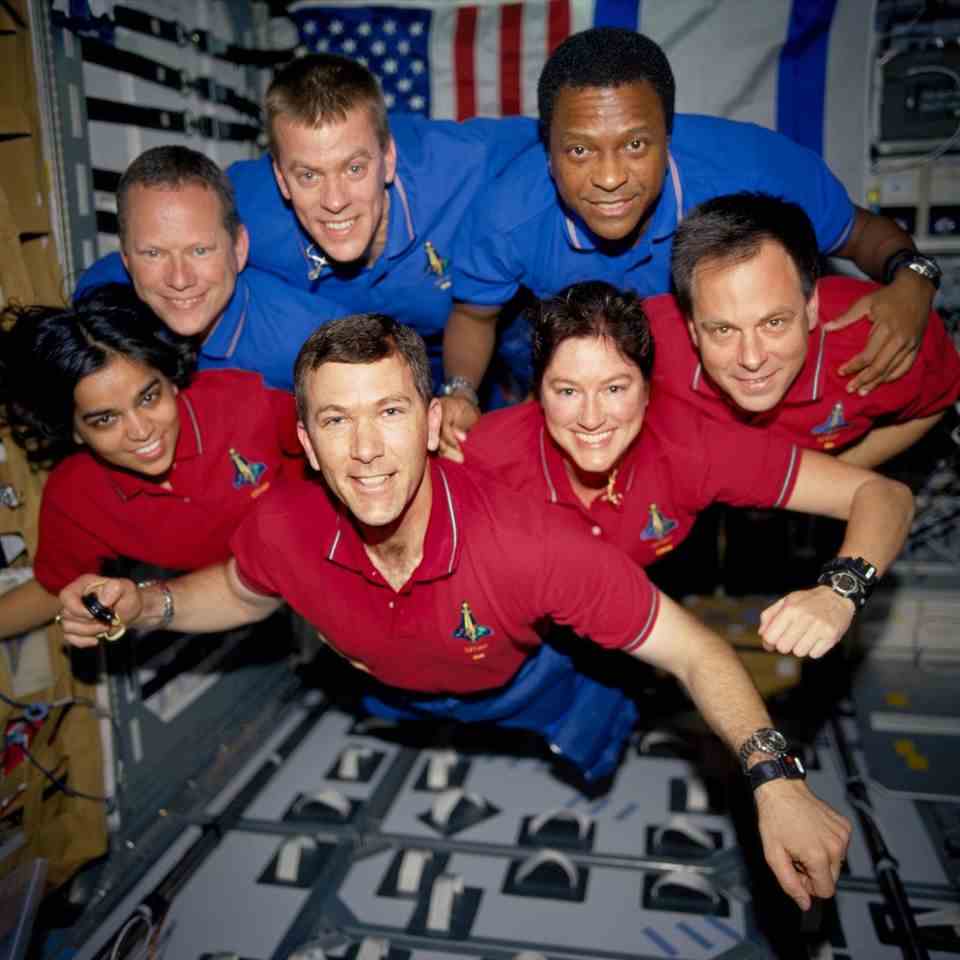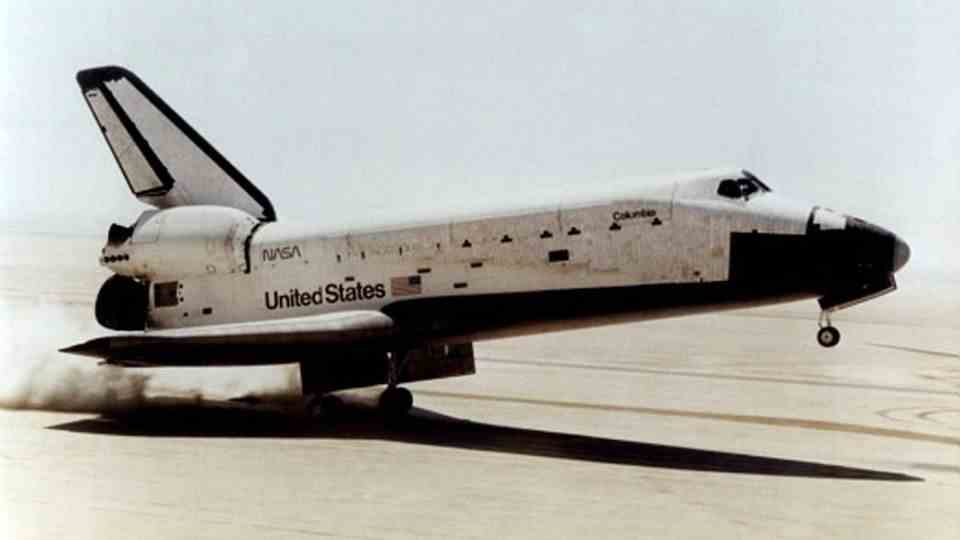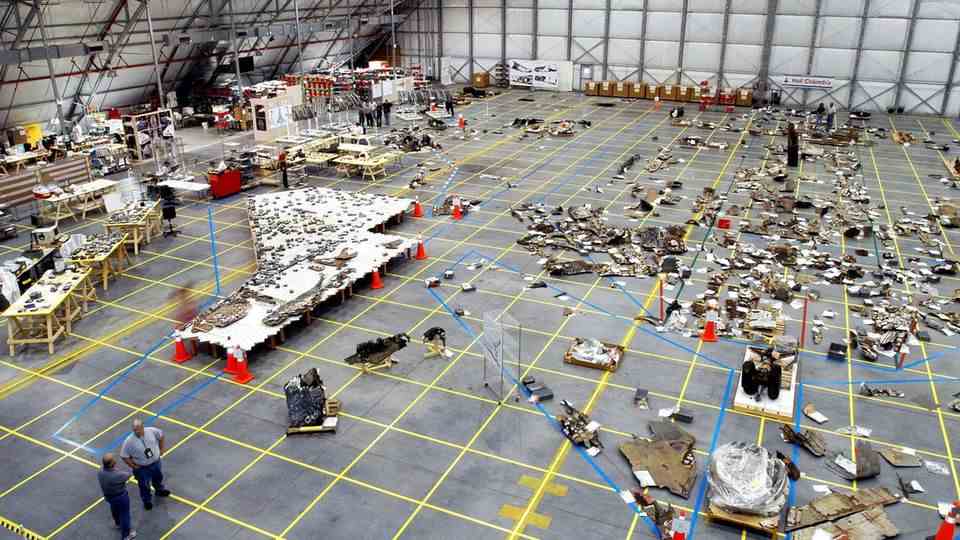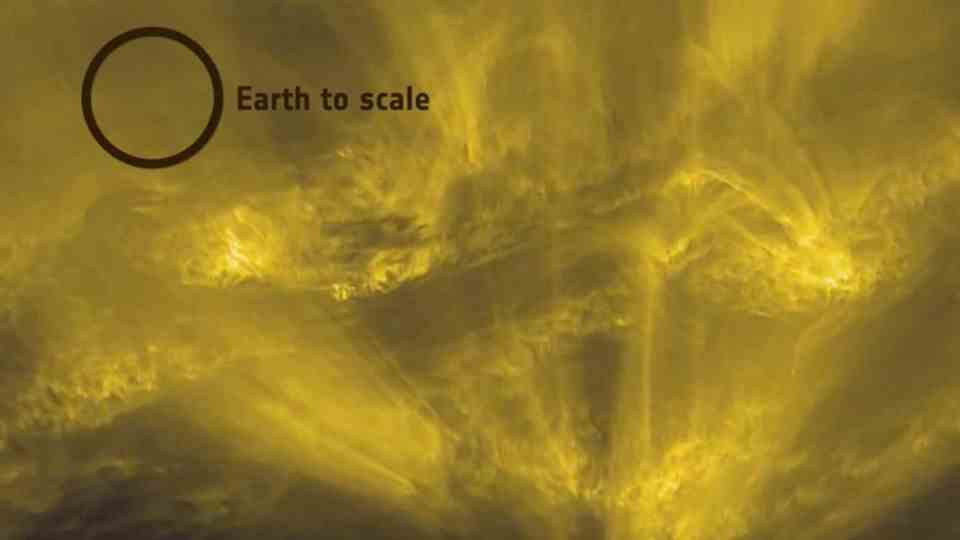It was supposed to be a day of triumph, but disaster struck: 20 years ago today, shortly before the planned landing, the space shuttle “Columbia” broke up. All seven astronauts died.
When the American Rick Husband takes his seat in the commander’s seat of the space shuttle “Columbia” at 7:53 a.m. on the morning of January 16, 2003, it will be the last time for the 45-year-old. Likewise for his colleagues. Together with six other astronauts, the father of two embarks on a two-week mission into space. On board with him: the pilot William Mc Cool, 41, the Indian-born mission specialist Kalpana Chawla, 41, her colleague Laurel Clark, the same age, and the three mission specialists David Brown, 46, Michael Anderson, 43 and Ilan Ramon, a 48-year-old Israeli fighter pilot and the first Israeli in space. Mission STS 107 will be the 113th flight in NASA’s shuttle program.
The take-off is like a picture book manoeuvre: Six seconds before lift-off, computers ignite the main engines. They burn enough fuel to fill an Olympic-size swimming pool every 30 seconds. Shortly after takeoff, the Columbia accelerates to 12,000 kilometers per hour. At an altitude of 43 kilometers, the shuttle drops its launch rockets. Shortly thereafter, the main engines are shut down and the shuttle is in orbit.
“Columbia” is corrupted on startup
But a day later, during a routine check of the video recordings of the launch, Nasa technicians make a disturbing discovery: shortly after launch, a piece of insulating foam detaches from the outer fuel tanks and hits a wing of the “Columbia”. It breaks into a thousand pieces. However, such incidents had occurred in almost all launches so far and never caused any damage.

The crew of the “Columbia” (from left): David Brown, William McCool, Michael Anderson (top row), Kalpana Chawla, Rick Husband, Laurel Clark and Ilan Ramon (bottom row)
© Imago Images
On February 1st, the crew of the “Columbia” will return to Earth. The astronauts don their pressure suits to withstand the enormous gravitational forces of re-entering the atmosphere. Pressed into their seats by the seat belts, they were cleared to re-enter shortly after 8 a.m. As the 100-ton shuttle enters the atmosphere at 17,000 miles per hour, friction heats its wings up to 1400 degrees. The only thing protecting the shuttle now is its insulating tile skin.
Contact with “Columbia” suddenly breaks off
Suddenly, four temperature sensors on the shuttle’s left side fail. When other sensors fail, the experts in the control center worry. Contact is made with the commander, but the contact breaks off in the middle of the conversation. The flight computers lose control of the landing approach.
From the ground, around 9 a.m., eyewitnesses in Texas and Louisiana saw discrete glowing fragments fall from the shuttle, which is normally scheduled to land 16 minutes later. You see bright lights and contrails that evoke horrible memories of another shuttle accident: 17 years earlier – on January 28, 1986 – the space shuttle “Challenger” with also seven astronauts on board was just 73 seconds after the start exploded before the eyes of the world public. None of the occupants survived.
The police receive a number of calls reporting a plane crash. 84,000 pieces of debris rained down in a radius of 200 kilometers on Texas and the neighboring state of Louisiana. In a week-long search, 25,000 helpers collect them later on motorways, in offices, in fields, meadows and in forests.
President Bush proclaims: “There are no survivors”
At 1 p.m., NASA announces the loss of the “Columbia”. Shortly thereafter, President George W. Bush appeared before the press: “This day brought terrible news and great sadness to our country. The ‘Columbia’ is lost; there are no survivors”. But how could it come to this?

The “Columbia” was the oldest shuttle in the fleet at the time of the disaster and was the first in space in 1981
© Ho / Picture Alliance
NASA expert Scott Hubbard first analyzes the video footage of the launch. Specialists spend two months improving the quality of the grainy and blurry images taken from 43 kilometers away. The result excites the specialist. At 500 miles per hour relative to the shuttle, a 770 gram piece of foam the size of a small briefcase is seen impacting the wing. Extensive tests are carried out to check whether the foam part has caused damage to the shuttle.
Test rips a hole in the wing
To do this, the experts are reconstructing a wing with the same insulating tiles as are attached to the wing of the space shuttle. They are made of reinforced carbon ceramic and withstand temperatures of up to 1650 degrees Celsius. Because a tile costs $800,000, people are reluctant to give it out for testing. Finally, the flight recorder indicates which tile on the wing could have been defective. It was not found by a firefighter in Hemphill, Texas, until six weeks after the accident. Despite falling from a height of 60 kilometers, he was almost unharmed.
With the help of a so-called chicken cannon, a corresponding piece of foam is fired onto the insulating tile. Lo and behold: the impact tears a hole 25 centimeters in diameter in the tile.

The US space shuttle “Columbia” disintegrated into several parts as it entered the atmosphere at a high altitude over North Texas
© Scott Lieberman/AP / Picture Alliance
Now the experts are certain: Hot gases at more than 4000 degrees had entered the wing through the hole. They burned the temperature sensors and melted the wing’s internal structure, causing the shuttle to become unstable and eventually breaking apart.

The debris found was reassembled in a hangar in Cape Canaveral
© NASA / Picture Alliance
But why did nobody notice the hole? The investigation later revealed that Nasa engineers were concerned about possible damage to the space shuttle and had therefore asked the program managers to take satellite images of the wing. But they refused because a full investigation could have delayed or even jeopardized an important shuttle mission to the ISS. A fatal decision: According to expert Scott Hubbard, rescuing the crew with a second space shuttle would have been risky, but theoretically possible.
NASA improves security measures
In 2008, the Columbia Crash Crew Safety Report was released. As a result, the astronauts had no chance to protect themselves and were dead within seconds.
After the accident, NASA is improving its safety precautions. The most vulnerable area of the foam trim is removed. Video surveillance of launches will also be improved and all shuttles in space will be photographed from satellites. And NASA’s management structure will also be changed to encourage employees at all levels to voice any security concerns they may have.
In the meantime, the shuttles have been completely sorted out – and NASA engineers have abandoned the idea of space shuttles, even if they can transport heavy cargo. Instead, the focus is on capsules, such as the “Crew Dragon” from Elon Musk’s private space company SpaceX, which is already being used to bring astronauts to the International Space Station (ISS). The “Orion” capsule, developed by NASA itself for the “Artemis” missions to the moon and later also to Mars, successfully completed its first real test flight at the end of 2022.
Because these pods are mounted on top of the rocket at launch, rather than next to it, they are less exposed to possible debris. In addition, in the event of an emergency, the astronauts could be freed from the capsule from above before or during launch. “We are working to never repeat our past mistakes,” said NASA CEO Bill Nelson.

Image source: ESA
Watch the video: New spectacular images of our sun: The Solar Orbiter space probe has flown closer to our star than ever before. These images show the sun’s otherwise hidden south pole and the magnetic storms that rage there.
Sources: National Geographic, NASA, raumfahrer.netDPA

